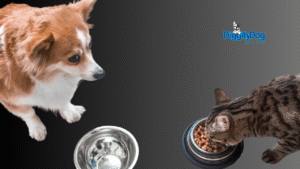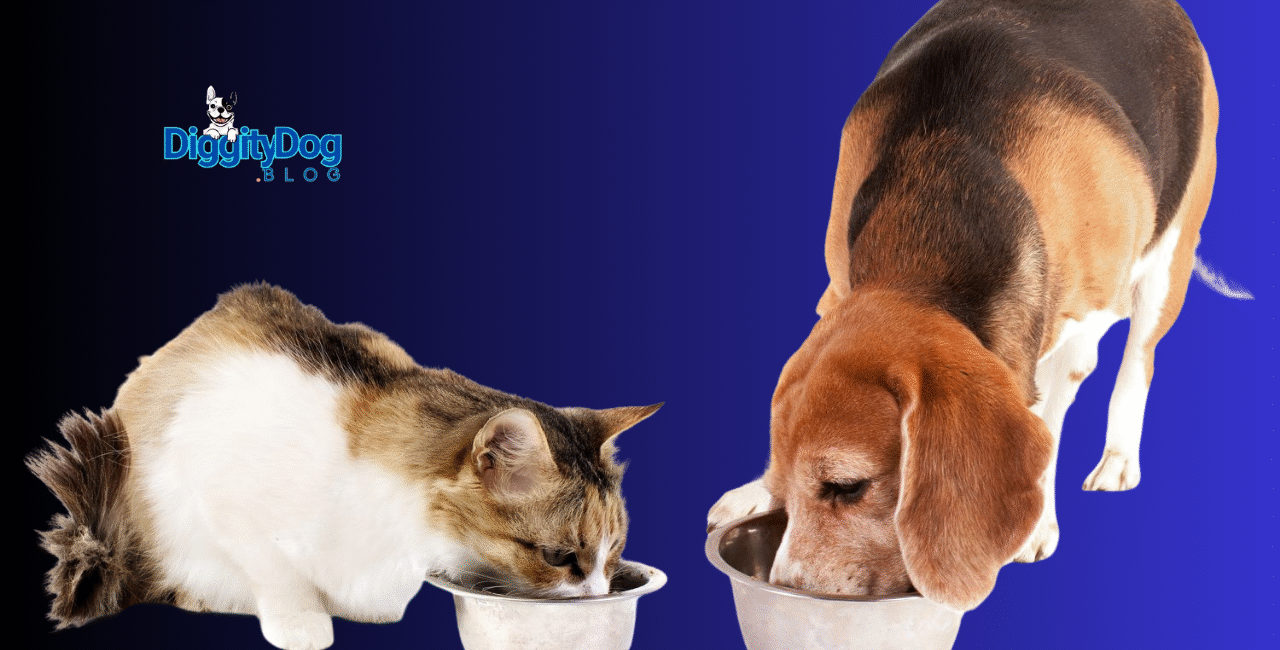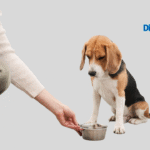Are You Storing Your Dog Food and Cat Food the Right Way?
Hey folks, Joshua Van checking in I’m the founder and senior editor over here, where we geek out on all things pet care. If you’ve got a four-legged buddy who’s more like a kid than a pet, you know the drill: keeping them bouncing with energy and looking sharp is everything. But seriously, are you storing your dog food and cat food the right way? It’s one of those sneaky details that can make or break your healthy pet‘s vibe. I remember back when I first got my rescue mutt, Max I’d just shove the kibble bag in the garage and wonder why it went stale so fast. Lesson learned the hard way, after a pricey vet visit for his upset stomach. These days, after years of digging into pet care tricks and chatting with vets, I’ve got the lowdown on keeping that chow fresh and safe.
We’re talking real talk here on pet care storage that fits into your busy life, pulled from the freshest scoops as of late 2024 into 2025 from spots like the FDA and AVMA. No fluff just stuff I’ve tried myself, like swapping flimsy bags for solid bins that actually keep the crunch in kibble. Hang tight; this could save you from tossing out half a bag or dealing with a picky eater who turns up their nose at funky food.
Key Takeaways: Easy Fixes for Better Pet Care
Right off the bat, here’s what you can tweak today to amp up your healthy pet game:
- Stash everything in a spot under 80°F your pantry’s probably perfect, but skip the steamy garage.
- Go airtight all the way; it blocks out air, bugs, and that weird smell that creeps in.
- For dry stuff, aim to use it up in 4-6 weeks once opened; wet food? Pop it in the fridge and finish in 3-5 days tops.
- Dodge direct sun and damp areas nobody wants moldy surprises.
- Rotate like a boss: Oldest food first, so nothing lingers and loses its oomph.
These aren’t pie-in-the-sky ideas; they’re straight from recent FDA tips and my own fumbles turned wins.
Why Nailing Storage is a Big Deal in Pet Care
Imagine your dog zooming around the park full of pep, or your cat curling up with that glossy fur glow. That’s the payoff from food that’s stored smart. But if you’re parking it in a hot spot? Yikes rancid bits, sneaky bacteria, and your healthy pet might end up with the runs or feeling blah.
From what I’ve seen in pet care, this stuff’s no joke. The FDA’s latest word stresses keeping things cool to stop fats from going bad and nutrients from fading away. And with AVMA pushing hard on clean handling to dodge bugs like salmonella remember those recalls last year? it’s worth paying attention. I’ve pulled more than one all-nighter researching after Max got into some iffy treats, so trust me: solid storage cuts down on drama and keeps the good times rolling.

Sneaky Dangers from Sloppy Storage Habits
Why’s your cat suddenly snubbing her dinner? Could be it’s turned quicker than expected. Watch out for:
- Germ hotspots: Warm areas let stuff like E. coli thrive, leading to belly aches or worse.
- Vitamin vanish: Heat and light zap the essentials, like those fatty acids for a sleek coat.
- Chemical creeps: Even safe plastics might ooze junk into oily foods over time, throwing off balance.
It’s not about being paranoid just smart. I’ve dodged a few bullets by switching up my routine, and your healthy pet deserves the same.
Keeping Dry Dog Food Fresh: Tips That Stick
Dry kibble’s the go-to for lots of us in pet care, but it can be picky about where it hangs out. Those hefty bags are built tough, but pop ’em open and you’ve got a timer running. Pulling from fresh 2024 guides, here’s what works.
Choosing the Right Spot and Setup
Forget scratched-up plastic grab stainless or safe glass with a snug lid. They shut out oxygen and rays that spoil the fats fast. I’ve sworn by those Vittles Vault things after testing a bunch; they keep air in check and extend freshness way beyond basic storage.
Prime Locations for Your Stash
Pantry wins every time cool, dry, no light sneaking in. Garage? Only if it’s not baking in summer heat over 80°F. If your basement’s dry, that’s cool too; just steer clear of humid vibes that invite unwanted guests like mold.
How Long It Lasts and Smart Swaps
Expect 4-6 weeks for opened dry food if you’re doing it right, according to spots like Chewy and PetMD. Slap a date on the bag and use the old one first. It’s a no-brainer in pet care that keeps waste low and nutrition high.
Handling Wet Cat Food: Don’t Let It Go South
Wet food’s that fancy treat cats go nuts for, but it’s all about moisture, so storage’s a different story. AVMA’s recent reminders treat it like your own leftovers handle with care or risk trouble.
Unopened? Easy Peasy
Tuck cans or pouches in your cool pantry, under 80°F, far from the oven’s warmth. They’re sealed tight, so they last 2-5 years no sweat.
Once Opened: Fridge It Quick
Shift extras to a glass container, seal it up, and chill at 40°F or less. Knock it out in 3-5 days Purina and others back this to keep it from spoiling. Freezing? Okay in small bits, but thawing might make it soggy, and cats hate that.
Tricks for Finicky Felines
To cut waste, portion into trays and freeze cubes. It’s a lifesaver for me when my cat decides she’s only eating half today.
Everyday Pet Care Slip-Ups That Bite Back
Admit it we’ve all left a bag gaping on the shelf or stashed wet food where it warms up. These oops moments are super common.
Big No-Nos and Quick Saves
- Sunny shelves: They cook the food shift to shade now.
- Loose seals: Bags leak flavor; clips or bins fix that.
- Bulk buys gone wrong: Huge sacks for tiny dogs spell spoilage buy smarter.
- Skipping cleans: Wash hands after touching to avoid germ swaps.
If this sounds familiar, give your setup a once-over. Your healthy pet will repay you with heaps of affection.
Extra Pet Care Hacks for Top-Notch Freshness
Level up with oxygen packets in dry bins they zap extra air. For wet, silicone covers trump tinfoil. And with fresh FDA notes on raw foods, scan for safe seals. It’s all part of staying ahead in pet care.
Frequently Asked Questions on Dog and Cat Food Storage
What’s the lifespan of opened dry dog food?
Roughly 4-6 weeks in a sealed spot, but give it a whiff if it’s rank, ditch it.
Okay to leave opened wet cat food out?
No way fridge it pronto; it goes bad in hours at room temp.
Best container for pet care storage?
Airtight metal or glass they don’t leach stuff like some plastics.
Does damp air really wreck kibble?
You bet; it turns it soft and moldy, as per AVMA’s latest.
Fridge unopened wet food?
Nah, cool shelf’s good till you crack it open.
References
- FDA. (2024). Tips for Safe Handling of Pet Food and Treats. https://www.fda.gov/animal-veterinary/animal-health-literacy/tips-safe-handling-pet-food-and-treats
- FDA. (2024). Proper Storage of Pet Food & Treats. https://www.fda.gov/animal-veterinary/animal-health-literacy/proper-storage-pet-food-treats
- AVMA. (2024). Pet food safety: Resources to keep patients and clients safe. https://www.avma.org/blog/pet-food-safety-resources-keep-patients-and-clients-safe
- Chewy. (2024). Dog Food Storage: How To Store Dog Food. https://www.chewy.com/education/dog/food-and-nutrition/best-practices-for-proper-dog-food-storage
- Purina. (2024). Cat Food Storage: How to Store Cat Food. https://www.purina.com/articles/cat/feeding/guides/how-to-store-cat-food
- PetMD. (2024). How To Store Dog Food. https://www.petmd.com/dog/nutrition/how-to-store-dog-food
- Nutrience. (2024). How to Store Wet Cat Food After Opening?. https://nutrience.com/community/blog/how-to-store-wet-cat-food-after-opening/
- CDC. (2024). About Pet Food Safety. https://www.cdc.gov/healthy-pets/about/pet-food-safety.html










No Comment! Be the first one.